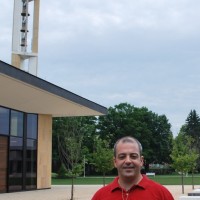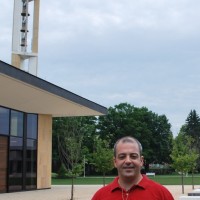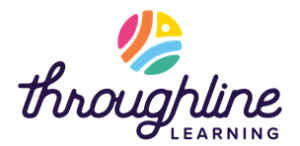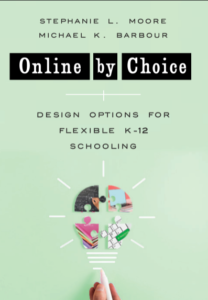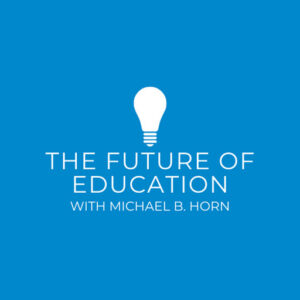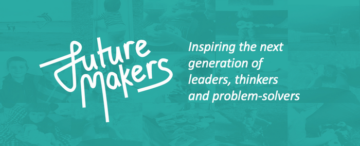January 12, 2023
Inside the Microschool Movement
An item from a neo-liberal… This one is an item from a business professor with little direct experience in education, but who believes free market economic principles are the answer to education’s (and pretty much all other society’s social) problems.
Open in app or online Homeschooling, charter schools, boarding schools, traditional schools, private schools, and more are all familiar modes of schooling. But the fastest growing segment of K–12 education is also one of the newest and least familiar: microschools. What’s behind the microschooling movement? What might it enable? What should we watch out for as it emerges? Don Soifer, the CEO of the National Microschooling Center, joined me to share more. Don has been advocating for microschools well before the pandemic, and prior to his role in that movement served on the DC Public Charter School Board from 2008 to 2018. As always, you can listen to the conversation above (or in your favorite podcast player), watch it on YouTube below, or read the transcript.
Michael Horn: Don, it is good to see you. Thanks for joining.
Don Soifer: Great to talk, Michael. Always a pleasure and I’ve learned so much from your work and our work together. This is the most exciting opportunity to put it to good work, I’ve had to enjoy and in my career hopefully innovating.
Horn: Well, that says a lot because you’ve been in a lot of movements at the forefront of education innovation. You see things early, you get on them, you do things with them. I want to start there by framing the conversation for folks.
Let’s just do it around your entry point right now. What is the National Microschooling Center itself, and why are you excited about this microschooling movement that is burgeoning?
Soifer: The National Microschooling Center is an empowering hub for pioneering small learning environments. In the course of doing this, and we’ve launched the center over the summer. We have both met and gotten to know some people that have been doing incredible microschooling work for a long time. We’ve gotten to feel like we’ve inspired some fantastic educators and leaders to do new and innovative things, and just as likely to do some old and innovative things. Microschooling is to me, in so many ways, the most exciting storyline we’ve come across in American education in a long time.
I think that way because the incredibly transformative potential that we see, it’s all about designing learning and teaching learning around the needs of the particular learning that you’re serving, and the relationship that you’ve built with those. There’s just so much need and space for that everywhere we look in education, everywhere we’ve been in education. It’s just exciting everywhere we look and the people doing it are the reason why.
Horn: When you say you’re helping all these entrepreneurs, all these microschools that are popping up, empowering them, what does that support look like on the ground?
Soifer: Well, we’ve got one of the fastest growing movements and storylines in education. The researchers say there’s between 1.1 and 2.1 million learners, who are relying on microschooling as their primary and first source of teaching and learning. It looks so different in so many different ways, in so many different types of settings, and in just about every different jurisdiction in the country. Depending on those jurisdictions, the National Microschooling Center loves to provide resources and learning tools.
Sometimes we do bulk purchase of learning tool licenses, so that we can take learning tools that we like working with and make them available to our microschooling leaders, along with some training and some background, and some help tracking them. In some cases, it’s helping them navigate the often complex framework for operating that they’re working in. In the school choice friendly states, that can be as simple as connecting in a seamless fashion with the school choice vehicle in their states.
Where there’s other states that we have those incredibly life-changing educators that we’re fortunate enough to have maybe one of in our lives, who are basically running microschools in some outlaw ethos. Because these are early adopters and the government and the regulators haven’t quite caught up with what microschooling is, and how to work within in their setting and everything in between. Sometimes we help them connect with each other, sometimes we help them learn from each other.
Sometimes with the incredible leaders that we have, we’re able to share insights and innovations in a real community way, and it’s got a feeling to it. Maybe we saw in those early days of the charter school movement, when these brilliant educators were meeting together in church basements trying to navigate how to bring this to the learners in their lives. It’s got a feeling a lot like that, but in so many ways, microschooling is just such a different movement than those were.
Horn: I want to get into the compare and contrast in a little bit but first, I want to stay one more beat on this because you founded this center in 2022. But my recollection, is you got interested in microschooling well before that and frankly, well before the pandemic. It was something that I was certainly writing about before the pandemic.
No comments yet.
RSS feed for comments on this post. TrackBack URI
- SEO Powered Content & PR Distribution. Get Amplified Today.
- Platoblockchain. Web3 Metaverse Intelligence. Knowledge Amplified. Access Here.
- Source: https://virtualschooling.wordpress.com/2023/01/12/inside-the-microschool-movement/
- 1
- 10
- 2018
- 2022
- a
- Able
- About
- above
- across
- adopters
- advocating
- All
- always
- American
- and
- android
- android app
- answer
- app
- around
- auto
- available
- background
- Basically
- because
- before
- behind
- believes
- below
- BEST
- between
- Bit
- board
- brilliant
- bring
- built
- business
- CA
- Career
- cases
- Category
- caught
- Center
- ceo
- certainly
- choice
- church
- clear
- come
- comment
- comments
- community
- compare
- complex
- Connect
- Connecting
- contrast
- Conversation
- country
- course
- data
- Days
- dc
- Depending
- designing
- different
- direct
- doing
- each
- Early
- early adopters
- Economic
- Education
- educators
- emerges
- empowering
- enable
- enjoy
- enough
- entrepreneurs
- entry
- environments
- Episodes
- Ether (ETH)
- Ethos
- everything
- excited
- exciting
- experience
- familiar
- fantastic
- Fashion
- fastest
- fastest growing
- Favorite
- feedback
- First
- forefront
- fortunate
- Founded
- Framework
- Francisco
- Free
- friendly
- from
- future
- get
- good
- Government
- great
- Ground
- Growing
- help
- helping
- Hopefully
- How
- How To
- HTTPS
- Hub
- identifier
- in
- incredible
- incredibly
- innovating
- Innovation
- innovations
- innovative
- insights
- inspired
- interested
- iOS
- iOS app
- IT
- itself
- joined
- joining
- jurisdiction
- jurisdictions
- Know
- launched
- leaders
- LEARN
- learned
- learning
- licenses
- likely
- Listening
- little
- Lives
- Long
- long time
- Look
- look like
- LOOKS
- Lot
- make
- many
- Market
- meeting
- Meta
- Michael
- might
- million
- modes
- more
- most
- movement
- movements
- National
- Navigate
- Need
- needs
- New
- Newest
- Old
- ONE
- operating
- Opportunity
- Other
- pandemic
- particular
- People
- Pioneering
- plato
- Plato Data Intelligence
- PlatoData
- player
- pleasure
- podcast
- Point
- Post
- potential
- presentation
- pretty
- primary
- principles
- Prior
- private
- problems
- Professor
- provide
- public
- purchase
- put
- Read
- real
- reason
- reduce
- Regulators
- relationship
- researchers
- resource
- Resources
- Role
- running
- San
- San Francisco
- School
- Schools
- seamless
- segment
- serving
- setting
- settings
- Share
- should
- Simple
- site
- small
- So
- Social
- some
- something
- Source
- Space
- spam
- start
- States
- stay
- street
- such
- summer
- support
- syndication
- TAG
- Take
- Talk
- Teaching
- The
- The Future
- their
- things
- time
- to
- together
- tool
- tools
- Tracking
- traditional
- Training
- Transcript
- transformative
- types
- under
- vehicle
- Watch
- ways
- What
- What is
- WHO
- within
- WordPress
- Work
- work together
- working
- writing
- Your
- youtube
- zephyrnet







